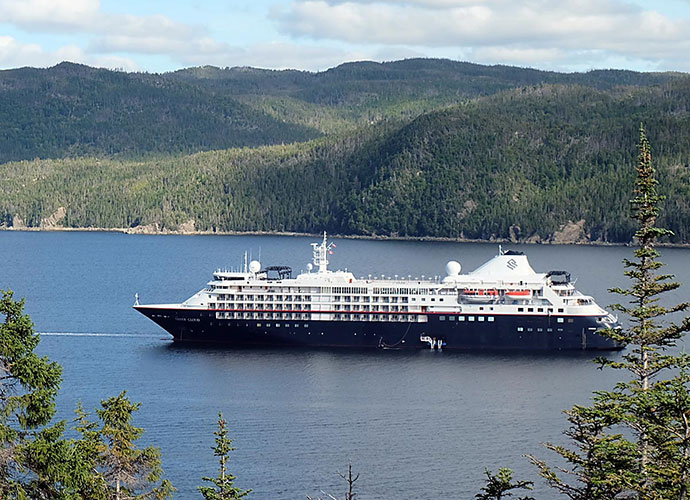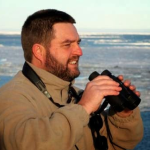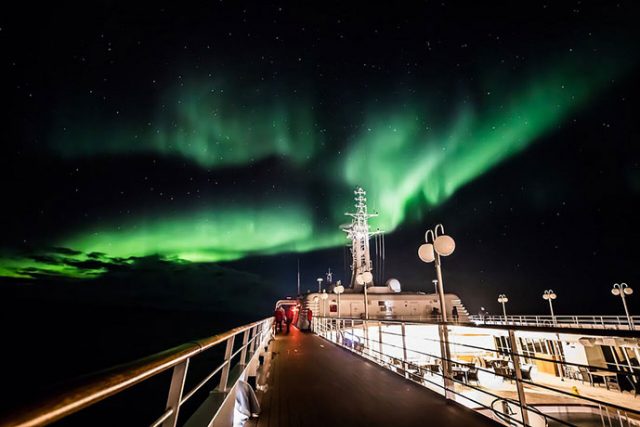The waterways around Newfoundland, Labrador, Nova Scotia and eastern Quebec are dotted with lighthouses, some of them more than 200-years-old.
There are some 150 of them in Nova Scotia alone. Yet even with all these lighthouses, ships still once came to grief in their hundreds.
Of course, these days with solar and wind power coupled with modern electronics, the life of a lonely lighthouse keeper is a thing of the past. Most of the old structures are preserved for heritage value with new, stark metal automated pylons standing nearby.
Today we visit Havre Saint Pierre with its Mingan Archipelago National Park, home to hundreds of weird, mushroom and phallus-like limestone monoliths formed some 500 million years ago when the ocean was much warmer.
With an escort of a tiny Minke Whale, our little local ferry arrives at the pier of Petite ile au Marteau where Guy, our Parks Canada guide awaits.
“Hello bonjour,” he says in the quaint bilingual greeting that is part of life all over Canada, but particularly so in this region where Arcadian French communities still speak their own form of the language.
“Keep your eyes open and you may witness sea parrots or sea swallows,” he advises, using the local terms for puffins and terns. The French spoken all through these parts has its own dialects too, peculiar to local regions and even villages. So strange is it, that even the native Quebecois have to beg for a repeat. Parisians would die with a leg in the air.

After a stroll of a few hundred metres we arrive at the lighthouse and the keeper’s cottage and outbuildings. Guy points out the interesting plants like Labrador Tea, a curious, star-leafed plant favoured as a herbal tea by the early settlers, but beware. You must steep the tea in hot water only to get the mild, calming benefits. Boil the water and you get both hallucinogens and a laxative. We joke that if you made that mistake, you would see purple monsters and poo yourself!
As we continue around the Gulf of St Lawrence aboard Silver Cloud, many more lighthouses are counted including several on the Iles de la Madeleine (which we will visit) and the Quebec coast to the west.
Just the other day while visiting the island of Newfoundland we were reminded that it was the Vikings who were the first Europeans to settle in North America. Who knew?
It’s true. The ancient Scandinavian sagas have long told of great feats of exploration and conquest, but these sometimes fanciful tales lacked hard evidence. But in 1960, two Norwegians conducted a thorough survey of the area, finding archaeological evidence and locating the settlement now known as L’Anse aux Meadows. The site was later inscribed by UNESCO on the World Heritage list.
Despite many years of excavation, there’s not a lot to see of the original settlement. The digs have been re-interred by Canada’s Parks Authority and replica structures built adjacent to the site. Here we met enthusiastic reenactors ‘living’ in the sod-covered timber-framed buildings carrying on life much as how these first settlers would have done 1000 years ago. Fascinating.
This exploration is an expedition in the true sense. Silversea Expeditions’ ship, Silver Cloud, has recently been rebuilt and enhanced to become one of the pre-eminent such vessels currently sailing the world’s oceans.
Apart from the wealth of historic ports, nature lovers can expect to see humpback whales, white-beaked dolphins, raptors and distinctive seabirds like the emblematic Atlantic Puffins.
Silver Cloud returns to Canada in September this year for a series of exceptional voyages that include Arctic ports in Nunavut and the Baffin Sea as well as Greenland.

Roderick Eime
Roderick Eime is a veteran travel and tourism journalist, broadcaster and photographer who has travelled the world for more than 40 years. He has explored every continent, sailed every ocean, and visited almost 100 countries. He has contributed to Western Weekender for more than 10 years and is regularly heard on ABC Radio.

